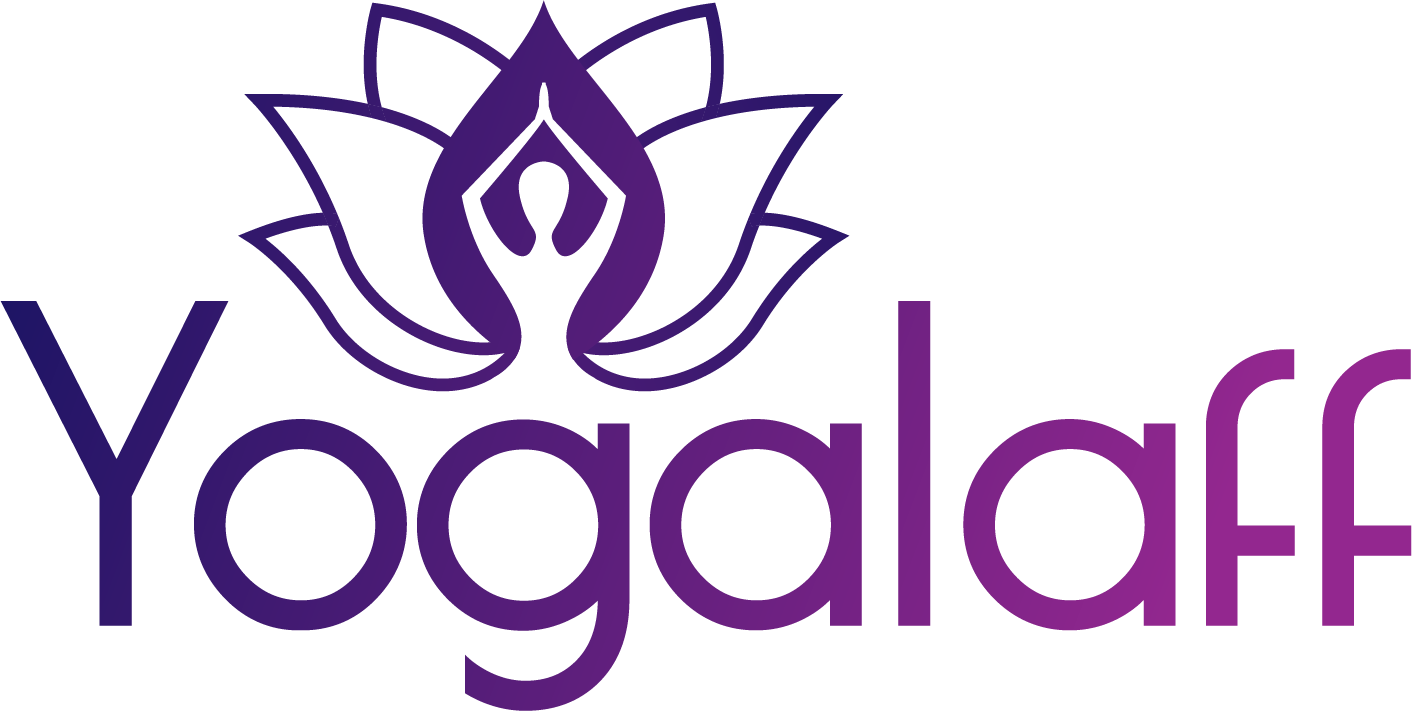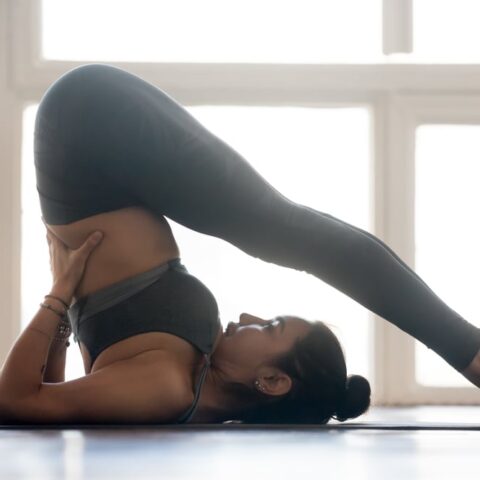Yin Yoga is a slower paced style of yoga that focuses on release. A release of tension and strain in the body that can be caused by constant non-movement, age or injury.
This style of yoga was founded by Paulie Zink in the 1970s and has since been intriguing yogis everywhere.
This fascination is caused by the ability of this practice to help relieve tension that is caused by tangled fascia, a protective flexible tissue that surrounds all of the internal organs, bones, veins, etc.
Fascia becomes tangled and dry due to inactivity which then leads to lack of circulation. Since our bodies were made for movement, none of this is good for us. Yin Yoga is one of the best remedies when this occurs.
A true passive and arguably so restorative style of yoga due to the ultimate goal of holding poses for long periods of time and confronting emotions that would otherwise be ignored. A release of physical, emotional and mental pain often times occurs when yogis take up this practice.
Yin Yoga poses are mostly done on the floor to activate the release. Yogis who find themselves falling in love with this practice should not be surprised by any means. Yin Yoga has an amazing impact on the mind, body, and soul.
The History of Yin Yoga: Understanding the Principles
Yin Yoga was founded in the Western world in the 1970s by Paulie Zink. Zink was a martial arts expert and Taoist Yoga teacher. Some will say that Zink’s style of teaching incorporates the teachings of Yin Yoga and Yang Yoga, which are completely opposite styles.
His decade of training prepared him to take on the task of introducing this new style. During his time as a martial arts expert, he came into contact with many individuals who had developed tight muscles over time and needed relief.
He worked with them to develop ways to loosen up those muscles and incorporated his Taoist Yoga experience.
Over time, this practice spread through the teachings and training of Paul Grilley and Sarah Powers. The blueprint for Yin Yoga was developed by both practitioners.
They incorporated Traditional Chinese Medicine and focused on the impact of the mind, body and soul connection. After years of training, Grilley discovered that certain poses in this practice have an impact on the channels (meridians) that energy (Qi) flows throughout the body.
If you are having a particular ache or pain in the body different poses can trigger those to be released and to redirect the Qi.
Paul Grilley and Sarah Powers adopted the name of Yin Yoga through discovering that most, if not all, of the poses, are done on the floor. Most of the poses are done in positions that allow the yogis to become closer to their discomfort and pain.
You cannot heal what you ignore and the best way to do this is to be low enough that you can hear your body.
Sarah Owen is another leading Yin Yoga instructor that was taught by Sarah Powers. Owen kept the discussion going of how important the floor poses are because of the deep connection the practice has to the lower body and internal tissues. When we are standing we are not relaxed, true relaxation occurs while in low floor postures.
This style of yoga has truly made a name for itself. Many yogis are trying it because they are curious about a slower pace and if it actually has the impact that everyone says it does. Most times they walk away a believer and eventually find themselves an experienced Yin yogi.
The Science of Yin Yoga
The organs, tendons, ligaments, muscles, veins, nerves and arteries are all surrounded by fascia (connective tissue), a thin flexible protective layer.
This protective layer can further be defined as a spider web or a huge sweater. Over time, fascia becomes tight and tangled due to age, unhealthy habits, injuries or lack of movement.
As a result of this, you may feel tension and discomfort while doing the simplest things such as bending over to tie your shoes or getting in and out of your car.
When we allow our bodies to become stagnant we are actually doing ourselves a disservice. Our arms, legs, joints, etc., were made for movement and when that does not happen they become stiff and circulation stops occurring.
Yin Yoga helps to restore the lost circulation throughout the body which in turn releases the tension that is caused by tangled fascia. To do this, yogis must hold poses during this practice for one to five minutes, sometimes even longer, in order for the real work to begin.
After 90 seconds of holding a pose, the deep connective tissue (fascia) has been reached and the real work can begin. A regular Yin Yoga practice will improve joint mobility and you will see that you are able to do daily activities without any pain or discomfort.
Yin Yoga is in unique in its own space.
In other yoga practices, the urgency to flow through poses with the breath is the main focus. But in this practice, the main focus is to quiet the body and mind to allow unresolved emotions to surface in order to deal with them.
Sure, there is Savasana at the end of some practices which allows you to surrender but during Yin Yoga, you are surrendering for the entire class by hold poses for extended periods of time.
You are surrendering to your emotions and feelings, which would otherwise continue to be neglected as you bumble through life.
Your emotions and feelings are surfacing through tension, joint pain, backaches, sore necks, etc., the release occurs when you sit with the pain as it flows through and out of your body.
The connection of mind, body, and soul is prevalent in this practice and allows yogis to come face-to-face with themselves.
Benefits of Yin Yoga
The benefits of Yin Yoga are similar to the benefits of traditional Yang Yoga but there are quite a few differences. Yang Yoga focuses on building muscle, strength, and stability.
Yin Yoga focuses on releasing tension and strain in the muscles. The benefits of Yin Yoga are often rooted in Traditional Chinese Medicine which relies heavily on energy flow throughout the body.
Energy can only properly flow throughout the body if there is no tension or strain, which Yin Yoga aims to decrease.
Each internal organ is connected to a different type of energy which is why whatever is going on inside of us, often times will manifest into the physical, mental and emotional realms as well.
We live in a society where we are always on repeat, we never stop to slow down. Living in an over-stimulated society is not good because our brains never have a chance to fully take in anything that is going on.
Whether the information we receive is positive or negative, our brains are always searching for the next high and we are constantly looking to fill the space and quiet areas. This has been known to become damaging to one’s overall well-being.
Empty spaces and quietness sometimes lead to anxiety, depression, sadness, confusion, self-doubt, self-conscious and many other negative reactions. In those instances, to avoid dealing with the uncomfortable we reach for the nearest activity that will instantly distract us and increase our stimuli.
Yin Yoga teaches us to sit, if just for a minute, and actually feel what we are feeling. Stillness is always good for reflection and re-grouping but that can sometimes be uncomfortable for us because we have to face what we do not necessarily want to.
Yogis have been known to say that their stress levels have decreased and they have a better understanding of a meditation practice.
If yogis develop a consistent practice they will see a significant increase in their willingness to deal with uncomfortable emotions and feelings. There is also a significant impact on your physical and emotional health, an increase in circulation, flexibility, and mobility in the joints and hips.
Yin Yoga Poses (Intro to Yin)
Yin Yoga poses are different from Yang Yoga poses because they target different sections of the body and are meant to be held for longer periods of time.
A yogi will get the most out of this practice if they hold the poses for one to five minutes or even longer because the fascia is able to loosen and stretch. We carry most, if not all, of our emotions in different parts of our bodies.
That is why often times yogis will become emotional during practice because emotion has been released through a pose. This practice, in particular, is known to release an emotional blockage in anyone who does it, because of the amount of time you are required to hold the poses.
The reason for doing that is to give the body enough time to slow down.
A popular pose in this practice is Butterfly Pose. A release of toxins and the relaxation of the muscles are just a few of the benefits of this pose.
To do this pose sit upright with a straight spine, bring the bottoms of your feet together in front of you. Then bring your head forward towards your toes with each hand to either side of your knees.
Your spine will naturally round in this pose, which is great for releasing tension in the back. Stay in this pose for as long as your body can handle it and you will feel your leg, hip, neck and back muscles loosen.
The longer you hold this pose the better it is for your ligaments, joints, and tendons. This will allow the fascia surrounding those to untangle and release.
It is important to note that if you a beginner to this practice that you do not push your body further that it can go. Your body will tell you how much it can and cannot take.
If you are still having trouble holding the poses for the recommended time frame, try focusing more when you are releasing and sit still while allowing any feelings that come up, without judgment.
Some Final Considerations
This slow-paced practice was founded in the Western world in the 1970s and can find its roots in Taoist Yoga. Other practitioners saw this practice as the healing path for all that is internal.
Their approach has rooted this style in Traditional Chinese Medicine. The benefits of this practice span to the physical, mental and emotional realms.
Traditional Chinese Medicine believes that all three realms are connected and that any pain can be manifested in those realms. For example, if you are experiencing joint pain, this can manifest through the mental and emotional realms.
Emotions and feelings that are not dealt with will stay stagnant in our bodies until we decide if we want to face them. This practice will help the yogi to do that.
The internal organs, joints, muscles, tendons, ligaments, veins, etc., are all protected by fascia. Often times fascia becomes tangled due to inactivity, age or injury, which causes tension and strains.
If done consistently this practice will help to relieve any pain or discomfort. An amazing beneficial practice for all yogis that decide to try and even make a home out if it.

